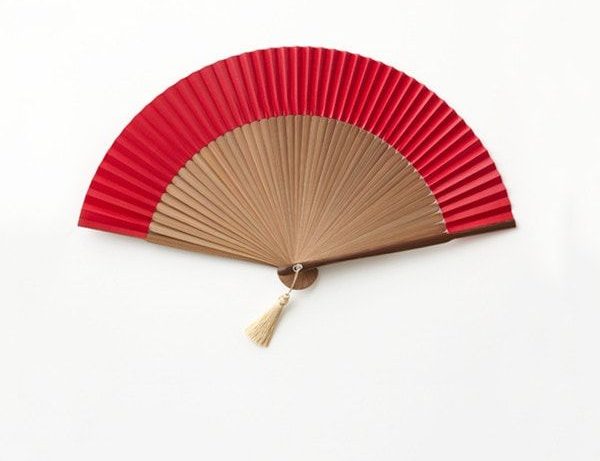In this column, we resurrect an old favourite, the object less ordinary. Here we look at a summer essential, and unfurl our fan.
Cool Biz has been with us for weeks, bringing short sleeves and lighter, more casual clothing; the rainy season is already a distant memory, the sun is beating down and the temperature has already hit the “extremely hot days” benchmark of 35C numerous times, many locations seeing days above 38C. The sensible among us under the air conditioning at this point reach for an old weapon now most commonly, but not exclusively, used to fight off the heat.
Although in use since antiquity and noted in ancient Egyptian, Greek and Roman writings, art and artefacts, the first fan to be wafted in Japan was introduced from China in the Nara Period (710-794). Effective, but unsophisticated pieces of equipment, fans of this era, known locally as uchiwa (団扇) – screen or fixed leaf fans – were made of woven bamboo and are the antecedents of the circular fans seen today at baseball games and given away free as advertising.
The folding fan, sensu (扇子) or oogi (扇) is a Japanese invention from Kyoto dating back to the early Heian Period (794-1185). The first folding fans were made from strips of very fine cypress, held together by thread. The number of pieces of wood was used to denote social status and these fans can still be seen today, used by Shinto priests and royals on formal occasions, often brightly coloured with long tassels, and are more ceremonial than functional.
From these high social strata, the folding fan spread to the middle classes and beyond, being introduced to China and later Europe, becoming one of Japan’s biggest exports. The folding fan became particularly popular in England and Elizabeth I was noted for her collection of fans decorated with pom-poms, jewels and feathers. Ladies of note posed for their portraits with prominent folding fans and a continuation of this early dedication to the Japanese import remains in London today at the Greenwich Fan Museum, the self-proclaimed first and ‘only museum in the world devoted entirely to every aspect of fans and fan making.’
Aside from ceremony and cooling, fans are used in games, such as tosenkyo (fan-tossing), where fans are hurled several metres at a fan-shaped ‘butterfly’ to knock it off a low wooden stand (the rules, scoring, tactics and etiquette of this game are way beyond the scope of this article); in fan dance, as props in kabuki and rakugo, in the tea ceremony, by sumo referees and brass, bronze and iron fans, tessen (鉄扇) have been used on the battlefield to signal manouevers, deflect arrows, cool troops and as covert weapons by samurai: these uses form part of the martial art known as tessenjutsu.
Fan production has roughly four stages – painting, folding the layered paper, inserting the ribs and attaching to the outer guard and fixing to the head with a rivet. The paper is referred to as the ‘leaf,’ and the rest collectively as the ‘monture.’ Kyoto remains an important production centre, and is home to many specialist shops.
One of these, Onishi Kyosendou (大西京扇堂) on Sanjo-dori, stocks around 3,000 different kinds of fan made from hemp, cotton and silk. 075-221–0334. 1000-2000. Closed Thursdays.
Fans can also be found in most department stores and hundred-yen shops or online at www.sensu-ya.com.

